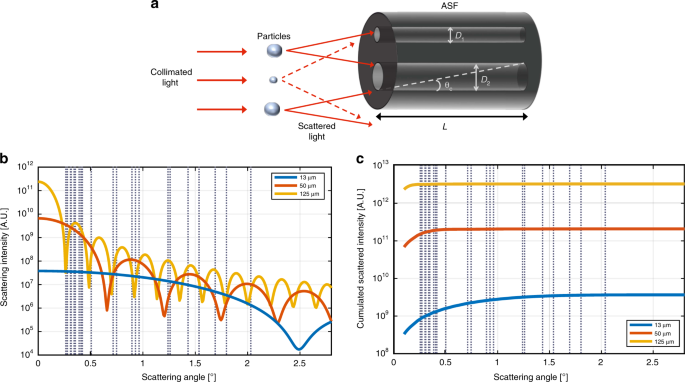Streamlining Measurements with a High-Accuracy Optical Fibre Diameter Analyser
Streamlining Measurements with a High-Accuracy Optical Fibre Diameter Analyser
Blog Article
Enhance Your Fibre Optic Projects With an Effective Size Analyser
The combination of an effective size analyser into fiber optic jobs acts as a critical component in achieving precision and consistency. By assisting in precise size dimensions, these analysers not just enhance the high quality of setups however likewise reduce prospective compatibility concerns amongst elements. In addition, the innovative capacities of modern analysers improve information collection and high quality control procedures. As we discover the essential functions and advantages of these tools, it becomes evident how they can change project outcomes and make certain adherence to sector standards. What continues to be to be gone over is how to efficiently execute these analysers in your existing process.
Relevance of Diameter Dimension
Measuring the size of fibre optic cable televisions is an important task that guarantees ideal performance and reliability in interaction systems. Exact size dimension is necessary for numerous factors, mainly for preserving signal integrity and minimizing loss. A cable television's diameter directly affects its capacity to transmit light effectively; variances from the defined diameter can result in enhanced depletion, which impacts the general efficiency of the network.
In addition, specific dimension is important throughout the installment and upkeep of fiber optic systems. An improper fit in between adapters and cords can result in signal degradation or total failing of interaction web links. By guaranteeing that diameters are within defined resistances, specialists can enhance compatibility in between parts, causing enhanced system dependability.
Furthermore, diameter measurement plays a considerable role in quality control during production. Consistency in the size of fiber optic cords is important for making certain consistent efficiency throughout different sets. optical fibre diameter analyser. This uniformity assists suppliers preserve sector standards and promotes confidence among end-users
Features of an Efficient Analyser
A reliable analyser for fibre optic tasks need to incorporate numerous crucial functions that improve precision and usability in size measurement. To start with, high-resolution optical sensors are crucial for specific diameter analyses, enabling individuals to discover also the least variations in fiber thickness. These sensing units need to be complemented by innovative calibration systems, ensuring consistent performance across different problems and materials.
Second of all, a straightforward interface is important for promoting ease of operation. This includes intuitive software that permits seamless information input and outcome, in addition to aesthetic depictions of the dimensions taken. A mobile design improves use in various field environments, making it simpler to conduct assessments on-site.
Additionally, the analyser ought to support several measurement modes, accommodating various fiber types and applications. The ability to shop and obtain historic information is one more vital attribute, allowing users to track efficiency over time and make educated choices.
Advantages for Fiber Optic Projects
Carrying out a size analyser in fiber optic jobs provides substantial benefits that substantially boost job effectiveness and quality. One of the key benefits is the capability to make sure exact measurements of fiber size, which is essential for preserving optimum efficiency in fibre optic systems. Accurate size readings help in the identification of incongruities that might result in signal degradation or loss, thus guaranteeing premium transmission.
Furthermore, using a size analyser enhances the quality assurance process. By automating dimension tasks, project great site groups can decrease the moment spent on manual examinations, leading to faster task conclusion and minimized labour expenses. This effectiveness likewise permits more extensive testing protocols, causing boosted product dependability.
Furthermore, consistency in fiber diameter dimensions promotes compatibility with other fiber optic elements, decreasing the risk of installation mistakes and boosting overall system efficiency. The incorporation of a size analyser not just aids in maintaining sector standards yet additionally promotes self-confidence in project deliverables.
Combination Into Existing Operations
Incorporating a diameter analyser into existing workflows can substantially improve the functional performance of fibre optic jobs. By perfectly integrating this technology, teams can accomplish accurate dimensions that are essential to maintaining the stability and efficiency of fibre optic systems. This combination enables real-time information collection and evaluation, which can be crucial during the production and installment stages.
Furthermore, the capacity to automate size dimension processes minimizes the potential for human mistake, making sure constant top quality control throughout the job lifecycle. The information produced can be conveniently shared across platforms, facilitating partnership among engineers, professionals, and task supervisors. This availability improves decision-making and speeds up project timelines.

Selecting the Right Size Analyser
When choosing a diameter analyser for fiber optic jobs, it is necessary to consider numerous essential variables that straight effect measurement precision and functional effectiveness. The resolution and accuracy of the analyser must align with the certain needs of your project. Greater resolution instruments can identify minute variations in size, which is important for ensuring ideal efficiency in fibre optic systems.
For jobs with explanation tight deadlines, a diameter analyser that offers fast data acquisition can substantially improve performance. Furthermore, think about the analyser's compatibility with existing systems and software program.
An additional crucial element is the range This Site of diameters the analyser can accommodate. By thoroughly evaluating these aspects, you can select a size analyser that enhances the efficiency and precision of your fibre optic tasks.
Final Thought
In final thought, the assimilation of a reliable size analyser is critical for enhancing fibre optic jobs. Specific diameter dimensions ensure ideal efficiency and dependability while lessening installment errors (optical fibre diameter analyser).
A cord's size straight affects its ability to transmit light effectively; discrepancies from the defined size can lead to raised depletion, which influences the total performance of the network.

Report this page